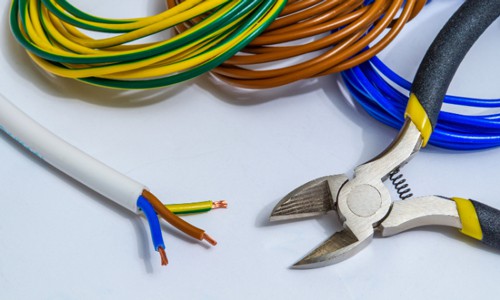When it comes to electrical installations, understanding the ampacity of a wire is crucial for its performance and preventing safety hazards. Take, for instance, a 14-gauge wire that is usually suitable for low-powered devices.
If you wonder, “How many amps can a 14 gauge wire handle?” Its capacity is generally around 15 amps. However, there are times that it may take more than this rating, depending on some factors. Read on for more detailed insights below.
Table of Contents
Ampacity Ratings for 14 Wire Gauges
Understanding ampacity ratings for various wire gauges is essential for electrical systems. Professional electricians emphasize that each wire size has an individual max current handling capacity.
For example, a 14-gauge wire is recommended only for 120v circuit installation or other low-power electrical connections. This is because 14 AWG amps can only handle 15 amps of current without taking any damage.
NEC standards state this current rating to keep a safe electrical system.
- Using the inappropriate size of wire in an application that is not rated for the current rating of the wire may become a hazard that can cause more significant damage.
- Furthermore, it may also result in an unstable power supply due to a voltage drop that usually causes by too much resistance.
However, there are some circumstances where the max amps for 14 gauge wire and other wire gauges can take more current than first stated. This occurs when the insulation on the conductor is built to tolerate greater temperatures brought on by an increase in current flow.
To familiarize ourselves with wire gauges typically used in an electrical system, here is a wire gauge chart based on NEC standards that you can refer to below.
| Wire Size | Amp Rating Per Grade of Conductor Insulation (Copper) | ||
| 60°C | 75°C | 90°C | |
| 16 AWG | —– | —– | 18 Amps |
| 14 AWG | 15 Amps | 20 Amps | 25 Amps |
| 12 AWG | 20 Amps | 25 Amps | 30 Amps |
| 10 AWG | 30 Amps | 35 Amps | 40 Amps |
| 8 AWG | 40 Amps | 50 Amps | 55 Amps |
| 6 AWG | 55 Amps | 65 Amps | 75 Amps |
| 4 AWG | 70 Amps | 85 Amps | 95 Amps |
| 3 AWG | 85 Amps | 100 Amps | 115 Amps |
| 2 AWG | 95 Amps | 115 Amps | 130 Amps |
Factors Influencing Ampacity
Understanding ampacity is essential for optimizing the safety and performance of electrical circuits. Let’s explore some of the factors that can affect wire amp ratings.
1. Conductor Size
The wire’s gauge, or size, influences how much current it can safely handle. Larger gauges allow more current to flow with less resistance, resulting in better ampacity.
On the other hand, smaller gauges have less area, resulting in higher resistance and reduced ampacity. This is why a 14-gauge wire is not recommended for use at 240 volts circuit installation with a higher current rating.
2. Temperature Rating of the Cable
Various insulation materials exhibit unique temperature ratings, significantly influencing the wire gauge amperage. These temperature ratings also play a significant role in terms of electricals. Depending on its insulation rating, it can withstand current flow within its temperature limits, which could lead to overheating and hazards.
3. Length of Wire
The length of a wire has a significant influence on its ampacity rating. Longer wires introduce more resistance into their extended paths, resulting in voltage drop. In this case, a power source at 220 volts may be reduced, which could not be enough due to a decrease in voltage.
Conclusion
In conclusion, understanding how many amps can a 14 gauge wire handle and various sizes of wire is essential for sustaining circuit reliability and protection. This helps prevent electrical hazards and ensures enough power is available to meet your circuit’s needs.
When working with electricals, always remember that the NEC standard is a guideline you should go by to avoid needless issues. If you’re unsure of the particular ratings for your setup, it’s best to refer to the NEC regulations or ask an experienced electrician for advice.

I am Edwin Jones, in charge of designing content for Galvinpower. I aspire to use my experiences in marketing to create reliable and necessary information to help our readers. It has been fun to work with Andrew and apply his incredible knowledge to our content.






